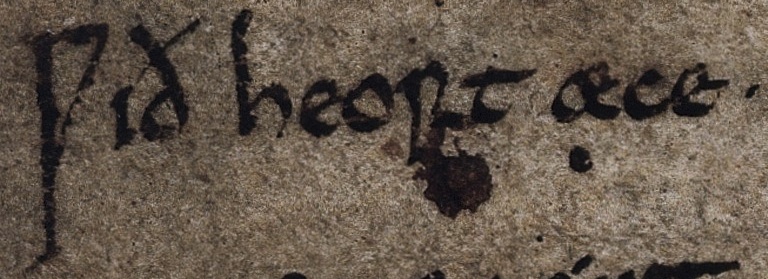Anglo-Saxon MSS Online V: London, Wellcome Historical Medical Library
In a very err... welcome move, the Wellcome Library has announced that more than 100,000 high-resolution images are now freely available from their site under a Creative Commons Attribution licence (put simply: download, use, enjoy, just give credit).
The images, drawn from the Wellcome Library's impressive historical holdings, include paintings, etchings, early photography and manuscripts. Of direct relevance for readers of this blog is a single leaf (London, Wellcome Historical Medical Library, MS 46) from an unidentified eleventh-century Anglo-Saxon manuscript. The leaf contains five medical recipes, written by three different scribes, offering remedies for heortæce (heartache), lungenadle (lung disease), wennas (tumours) and liferadle (liver disease).

Foreshadowing the modern obsession with cookbooks, the recipes offer step-by-step, homely instructions about how to prepare the various remedies from the ingredients listed. The following explains how to mix an ointment to cure a tumour:
Man sceal niman clæne hunig, swylc man to blacan briwe deþ, 7 wyllan hit neah briwes þicnesse 7 niman rædic 7 elenan fillan 7 hrefnesfot. Cnocian, swa man betst mæge, 7 wringan þonne þa wyrta 7 geotan þæt wos þærto 7 þonne hit beo forneah gewylled, cnucian godne dæl garleaces 7 don þærto 7 piperian, swaswa þe þince.
One shall take pure honey, such as is used to lighten porridge, boil it to almost the thickness of porridge; take radish, elder, wild thyme, cinquefoil, pound them as well as you can; and when it is almost done mix in a good measure of garlic and put to it as much pepper as you think.[1]
A good measure of garlic and as much pepper as you think? For more medieval medical-culinary tips, you can view the recto of the folio on the DigiPal website. Now where did I put my cinquefoil?
Further reading and resources
- Sarah Gilbert's informative discussion of Wellcome Historical Medical Library, MS 46
- Description, history and translation of the content of Wellcome Historical Medical Library, MS46 on the Wellcome Library website
- The original announcement from the Wellcome Library
- Download Wellcome Historical Medical Library, MS 46, folio 1r
- Download Wellcome Historical Medical Library MS 46, folio 1v
[1] Translation courtesy of the Wellcome Library website
Comments